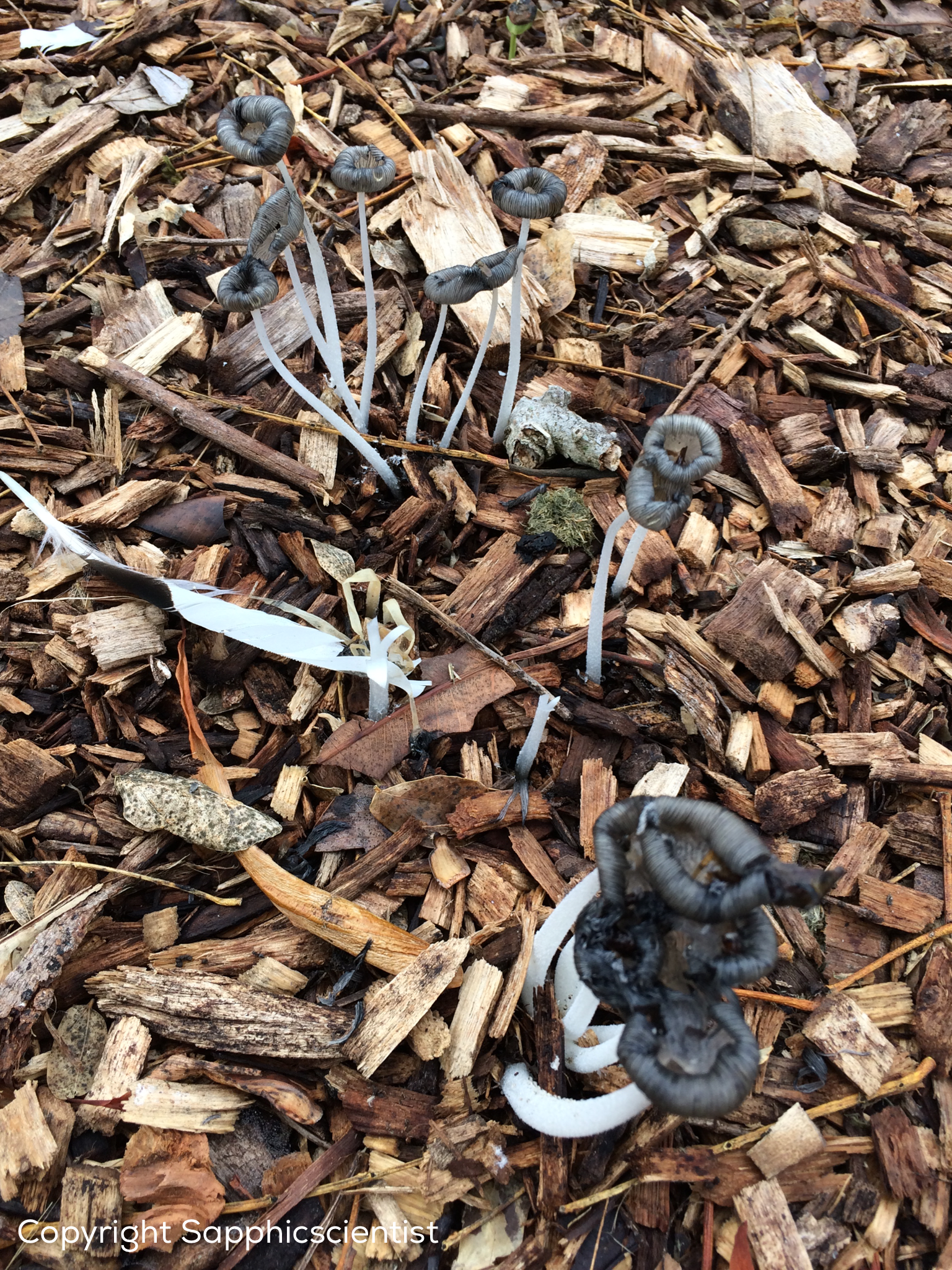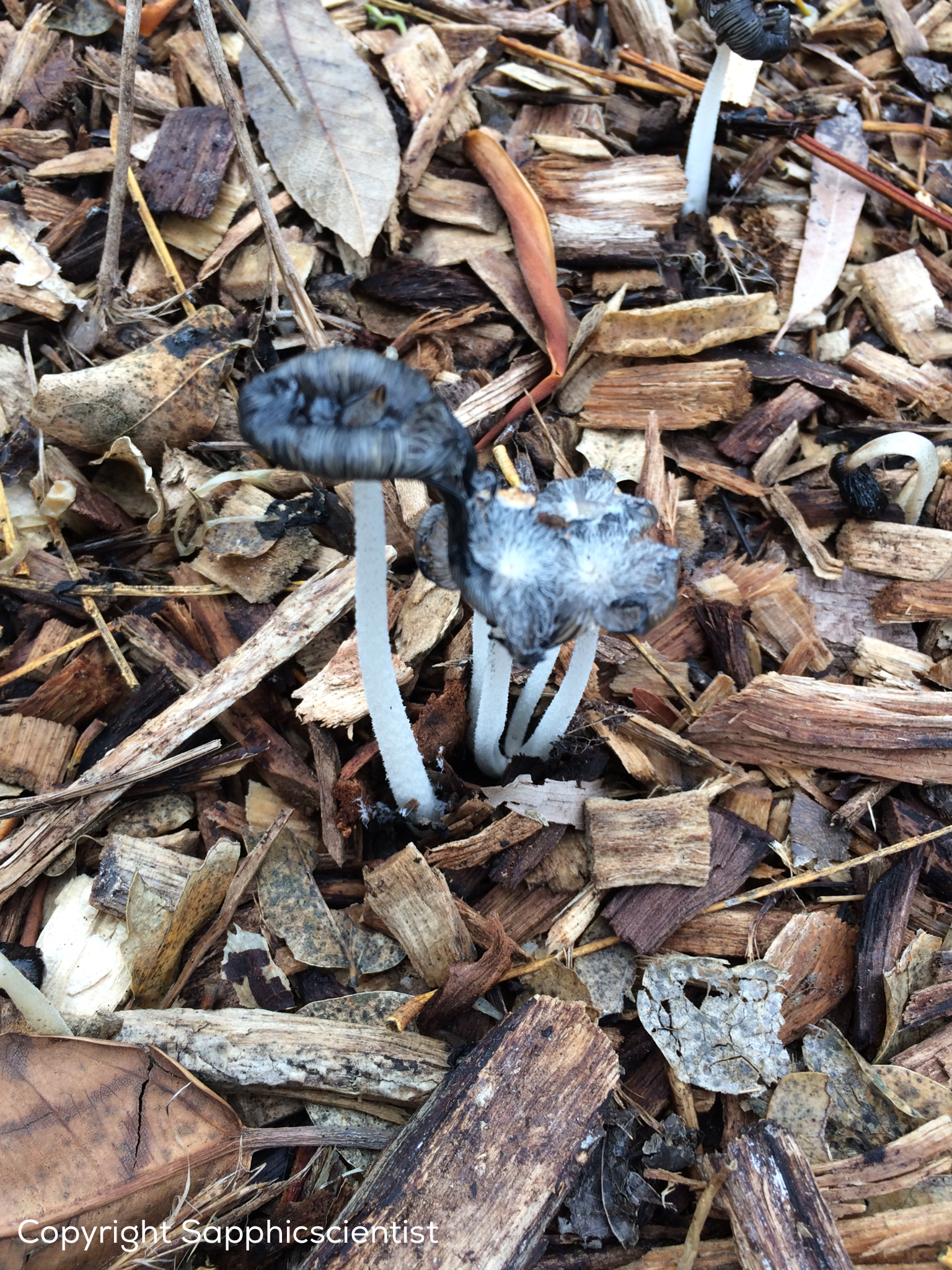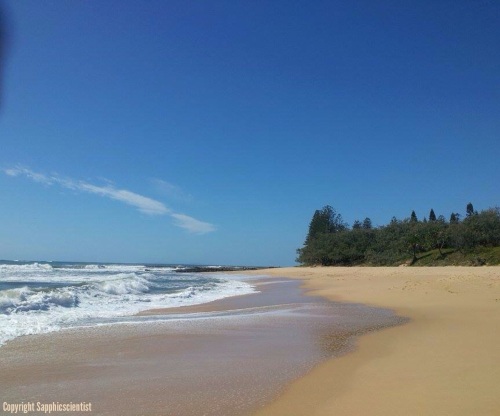It’s been raining for the last couple of days. With a touch of humidity. Perfect weather for fungi spotting.
Observed these ink caps in a flower bed on campus.


Posted in Scientists on October 20, 2017| Leave a Comment »
It’s been raining for the last couple of days. With a touch of humidity. Perfect weather for fungi spotting.
Observed these ink caps in a flower bed on campus.


Posted in Fungi, Fungi Photos, Mushrooms, Mycology, Natural History, Scientists, tagged Fungi, fungi on log, fungi on tree trunk, fungi photos, mushrooms on April 10, 2015| Leave a Comment »
A troupe of orange-brown mushrooms on a fallen tree trunk. The tree fell in a destructive summer storm in November 2014. The fungi mycelium must have colonised the wood rather quickly (I’m presuming as 6 months seems rather quick for a fungus to infiltrate a tree trunk and produce fruiting bodies – mushrooms).














Posted in Scientists on March 27, 2015| Leave a Comment »





Posted in Fungi, Fungi Photos, Microbiology, Mushrooms, Mycology, Natural History, Scientists, tagged Fungi, fungi photos on March 13, 2015| Leave a Comment »
I partook of a bit of weekend fungi spotting on Saturday 28 February – while hanging out the washing and going for a late afternoon walk along a country road. I spotted some large pale brown mushroom-like specimens and pulled one out of the ground with a twig (I’m always cautious of touching fungal specimens with my bare hands). The specimen was quiet mature with greeny-grey spores leaving a smudge on the adjacent mushroom. I’m unsure what genus and species the specimens were, but I’m going to read some fungal identification books and websites to try and identify the specimens.




Posted in Scientists on September 2, 2014| Leave a Comment »
An interesting post from one of my science communication classmates on biodiversity.
Biodiversity Loss
Biodiversity loss – what is all the fuss about? Perhaps the best place to start is through defining what biodiversity is and what it means across spectrums of environment and human society. According to the Australian Museum, biodiversity refers to the variety of life, specifically:
“It is the variety of all living things; plants, animals and micro organisms, the genetic information they contain and the ecosystems they form. Biodiversity is usually explored at three levels – genetic diversity, species diversity and ecosystem diversity. These three levels work together to create the complexity of life on Earth.”
Australia has a high level of endemic biodiversity and is one of seventeen countries described as being ‘megadiverse’. This means that for only a small proportion of the globe’s surface (less than 10%), more than 70% of biological diversity is supported.
Over the last 200 years Australia’s biodiversity has suffered the…
View original post 185 more words
Posted in Scientists on February 15, 2014| Leave a Comment »
I just read a very interesting article by Tom Welton, a Professor of Sustainable Chemistry at Imperial College London, in the Guardian – Gay Prejudice? It’s not easy admitting you’re a scientist. Certainly raises a few points around LGBT scientists coming out to the LGBT community and seeming disinterest in science within that community. Out LGBT scientists are just as important role models as out out LGBT sports people, musicians, artists and activists. LGBT youth interested in science need to see that there are people like them that have chosen careers in science.
Posted in Female Scientists, Scientists, Women in Science, tagged Marie Currie, Nobel Prize, Rosalind Franklin, Women on September 20, 2013| Leave a Comment »
A fascinating article and photo gallery of female Nobel Prize Winners – Women Nobel Prize Winners: 16 Women Who Defied Odds To Win Science’s Top Award (PHOTOS)
Posted in Scientists on September 20, 2013| 1 Comment »
This is a fantastic idea and a stimulating way to engage young women in pursuing science, maths, engineering or technology as a career option
 STEM Studio is free one-day event that encourages female high school students to consider uptake of science, technology, engineering and maths (STEM) study and careers paths. Students from years 8/9 will spend the day at the South Australian Museum and get an exclusive view into the work of the Museum and Flinders University. Each group will:
STEM Studio is free one-day event that encourages female high school students to consider uptake of science, technology, engineering and maths (STEM) study and careers paths. Students from years 8/9 will spend the day at the South Australian Museum and get an exclusive view into the work of the Museum and Flinders University. Each group will:
STEM Studio aims to attract introduce girls to the range of STEM skills in use at the Museum to demonstrate why continuing to study subjects in science, maths, engineering and technology is an investment in critical thinking, learning for life and career paths. Increased STEM skills in the community is important for making sense of complex issues and contributing to key parts of the Australian economy including mining, advanced manufacturing and food production. As the…
View original post 142 more words
Posted in Australian Science, Science, Science Communication, Science in the News, Science Writing, Scientists, tagged Climate change, climate change skeptics, Global Change Institute, skeptical science, University of Queensland on September 19, 2013| Leave a Comment »
I attended a rather interesting talk yesterday on global climate change, science communication and the misinformation techniques used by climate change skeptics. The talk was given by John Cook, a climate communication research fellow at the Global Change Institute at the University of Queensland, Australia. John Cook is the lead author of a significant paper on climate change consensus entitled Quantifying the Consensus On Anthropogenic Global Warming in the Scientific Literature published in the journal Environmental Research Letters. Impressively the link to the paper was tweeted by Barack Obama! John Cook also created the website Skeptical Science and runs The Consensus Project which is described as “a peer-reviewed citizen science driven project conducted by volunteers at the Skeptical Science website.” (The Consensus Project, 2013).
The abstract of the paper (Cook et al, 2013) reads as follows –
We analyze the evolution of the scientific consensus on anthropogenic global warming (AGW) in the peer-reviewed scientific literature, examining 11 944 climate abstracts from 1991–2011 matching the topics ‘global climate change’ or ‘global warming’. We find that 66.4% of abstracts expressed no position on AGW, 32.6% endorsed AGW, 0.7% rejected AGW and 0.3% were uncertain about the cause of global warming. Among abstracts expressing a position on AGW, 97.1% endorsed the consensus position that humans are causing global warming. In a second phase of this study, we invited authors to rate their own papers. Compared to abstract ratings, a smaller percentage of self-rated papers expressed no position on AGW (35.5%). Among self-rated papers expressing a position on AGW, 97.2% endorsed the consensus. For both abstract ratings and authors’ self-ratings, the percentage of endorsements among papers expressing a position on AGW marginally increased over time. Our analysis indicates that the number of papers rejecting the consensus on AGW is a vanishingly small proportion of the published research.
In summary, the study found that 97% of papers that stated a position on human caused global warming endorsed the consensus that humans are causing global warming. The significant consensus amongst scientists through peer reviewed papers and extensive scientific evidence of global warming and the influence humans have had on this surely indicates human involvement in global warming. Hopefully this paper’s findings, the communication of this message, and innovative ways to combat misinformation from climate change skeptics and associated conservative media and politicians will enlighten the public to the reality of climate change.
As I sat in the auditorium and listened to the misinformation used by climate change skeptics and I thought how terrible it is that scientific data and the scientific methods is suffering. What does the public think of science? Does conservative media influence the public to trust science less? I was immensely inspired to pursue science communication as a career, as there is such an important role for science communicators, especially in combating misinformation campaigns and presenting evidence that will enlighten the public and governments.
 (Source – The Consensus Project)
(Source – The Consensus Project)
References
Cook, J, Nuccitelli, D, Green, S, Richardson, M, Winkler, B, Painting, R, Way, R, Jacobs, and Skuce, A (2013) Quantifying the Consensus On Anthropogenic Global Warming in the Scientific Literature, Environmental Research Letters 8:1-7
The Consensus Project (2013) Retrieved from theconsensusproject.com
Posted in Scientists on July 18, 2013| Leave a Comment »
Sometimes I wonder why I didn’t entertain the idea of a career as an Archaeologist.
I am fascinated by history. I am a scientist by nature and training (analytical, inquisitive, skeptical, a critical thinker). I would love to time travel back to the 1930’s and 1940’s a be an Archaeologist in the vein of Indiana Jones. Oh for the adventure and romance (yes with tough, beguiling adventuresses or glamorous femme fatales)!! I do have ideas for a story / novel along these lines.
Over the last year and a half, while assessing applications from PhD students with a background in Archaeology or reading about Archaeological researchers in the Faculty I work in, I have contemplated my question. “Why didn’t I study Archaeology at university?”
In the final years of school I dreamt of being a Forensic Pathologist or Forensic Biologist. I was still fascinated with history. When I came to…
View original post 232 more words